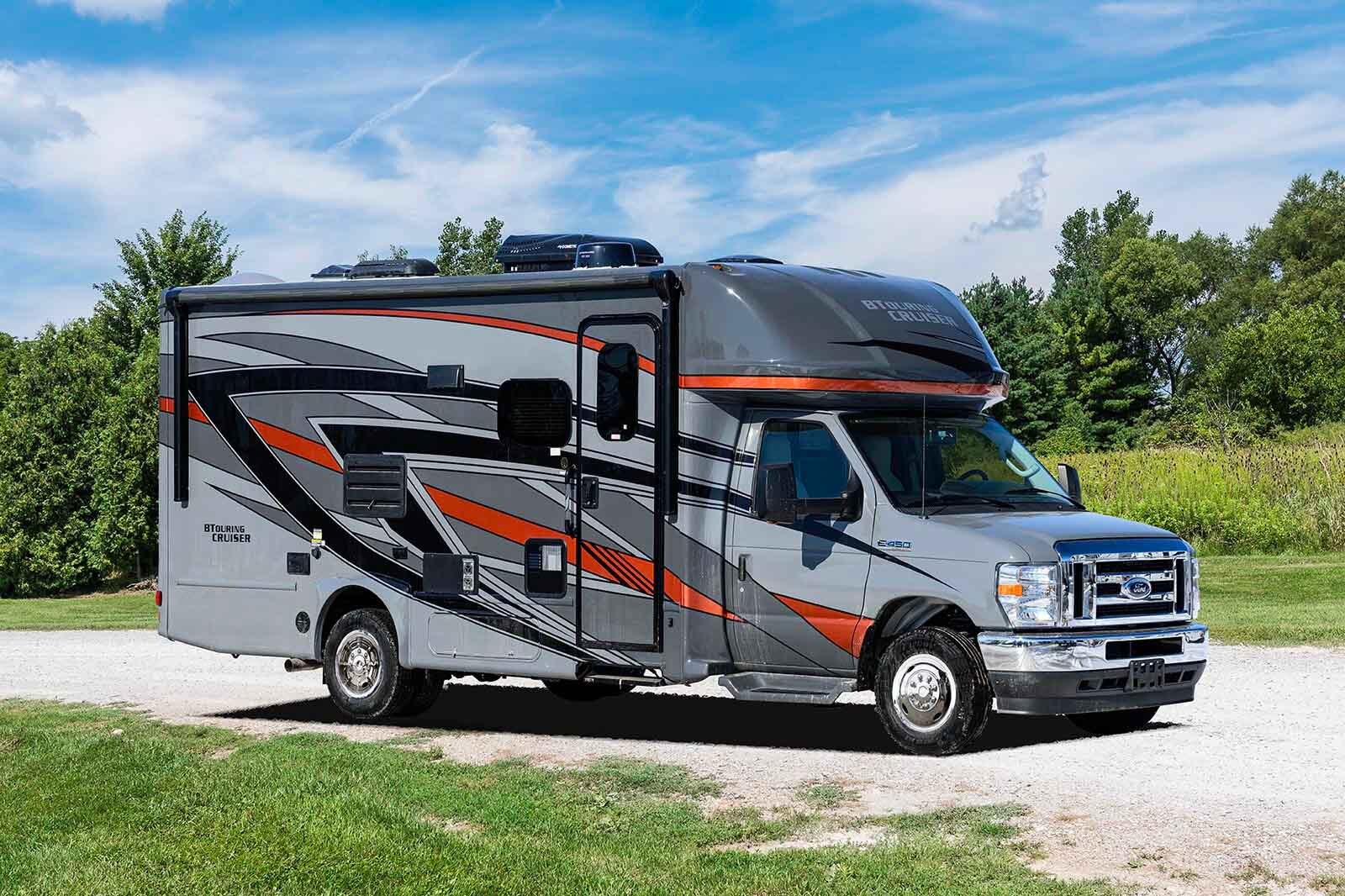TV/Video Entertainment on the Road
Virtually all travel trailers include a provision for TV/video entertainment. You’ll likely find:
- An external coaxial connection where an outside source of cable programming can be attached.
- Internal wiring to connect the input and outputs for programming sources to TV/video and audio components
- A wall bracket or other means to secure the TV while it is in use, and while the trailer is moving
- An appropriate 110V AC outlet (or two) near the TV mounting point, connected through a 110V breaker to a 110V power source
- A coaxial cable outlet that allows the TV to be connected to the cable source
- A coaxial cable outlet that allows the TV to be connected to a satellite programming source
- A coaxial connection to a roof-mounted antenna for receiving broadcast (over-the-air) programming
- Cables/plugs to attach the TV to an enhanced sound system (if so equipped)
Depending on options included in your trailer, the entertainment system may or may not include the TV itself. In some cases, a suitable TV is provided by the manufacturer; in other cases a TV is provided by the RV dealer, and in still other cases, trailer owners may purchase their own TV for the system.
While your onboard entertainment system is capable of a wide variety of TV and video programming options, you are often dependent on suppliers and sources that vary from the services you make use of at your permanent residence. Prepare to be flexible and adaptable.
When setting up camp, the exterior coaxial connection can be connected to a source of cable programming provided by the campground. The connection is a standard threaded sleeve at the end of the cable source. This external connection can be hooked up to other industry-standard cable sources, such as those available in residential locations.
- The TV must be plugged into a working 110V outlet. Any enhanced sound system must also be connected to a power source.
- The TV can also be connected to other programming sources, including the roof-mounted antenna, a satellite receiver, or streaming service box (Apple TV, Roku), or DVD player, etc.
- Cable TV/video entertainment are dependent on a signal provided by a campground. The quality and quantity of this programming will vary.
- Similarly, Internet services offered in campgrounds vary in quality and capacity; this will significantly affect the programming you will be able to stream to your TV.
- Satellite programming requires the use of a portable satellite receiver designed for the RV environment. It also needs a suitable view of the sky, and an orientation suitable for receiving a satellite signal.
The availability of over-the-air broadcast programming is entirely dependent on the strength of the broadcast signal reaching the roof-mounted antenna. This signal is affected by distance from the broadcast source, physical obstacles, atmospheric conditions, and other factors. It is typically necessary to re-program the channel selector by scanning broadcast frequencies every time the trailer is moved.
TV/video technology and programming is a fast-changing landscape. Important details about the system in your trailer are best explained by the written documentation that accompanies the equipment in your specific trailer. Further information is often available on the component manufacturers’ websites.













